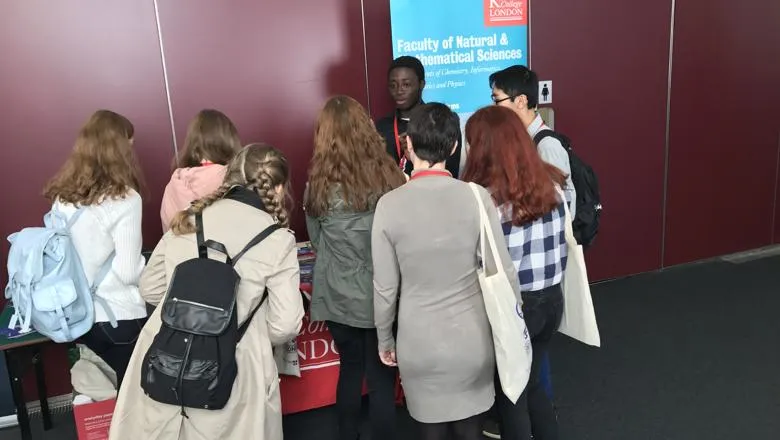01 November 2016
King's College London students at the Young Scientists Journal Conference
Omar Essilfie-Quaye and Miho Wakai both students from the Department of Physics describe their experience at the Young Scientists Journal Conference

Universities act as an oasis for creativity and innovation, in all fields from philosophy to quantum physics. Most conferences are designed for academics and postgraduates, but not this one, this wasn’t your typical conference. For one day in October 2016, sixth form students guided the discovery at the Young Scientists Journal Annual Conference. As keen undergraduate physicists, we were excited to attend and share our love of King’s College London.
The Young Scientists Journal enables school students as young as twelve to contribute to genuine scientific research. Through young ambassadors like us, it gives students a platform to share their contributions with the wider scientific community. Education is an important aim, but an education that transcends the classroom- this is educating the scientific community. At King’s College London, we’re taught by international researchers from a range of different backgrounds, at the conference, we shared what our university is like and how science is accessible to all.
What happened at the conference?
School researchers were given the opportunity to give short presentations about their research and to learn from other experts in the field. The range of projects spanned from sequencing the DNA of a spider to sending weather balloons into space. Every project was at the cutting edge of science, and I can only imagine how these young minds will change the world of science in the future.
The research of Professor Chris Lintott, an Astrophysicist at the University of Oxford, is focussed on the formation of the stars and galaxies, he studies images taken by space telescopes. These telescopes collect thousands upon thousands of images- far more than his research team could analyse on their own. He came up with the idea of getting the public to help in a “Citizen Science” experiment. His website, Galaxy Zoo asks people to help organise galaxies into different groups, they then use this information to re-program their computer systems. Just by clicking through images, non-experts can make a difference to current science. Galaxy Zoo is no longer just studying the skies: from penguins in the arctic to the monitoring populations in cities, the citizen science software is being used by researches all over the world.
We were very excited by this passion for science, our favourite, particle physicist Professor Jon Butterworth, explained the developments that have been happening at CERN. CERN was built after the second world war to reunite countries after conflict and put European science at the forefront of a global stage. Particle physics is important to us at King’s College London, it was in our physics department that Peter Higgs began his life as a physicist in 1947. Our High Energy Physics lecture courses are taught by world leading researchers, some of whom are even recognised by the Queen for their commitment to science and technology.
Our own desire to learn and expand our knowledge was reaffirmed and it has given me a new insight into the subjects that we hold so dear.
